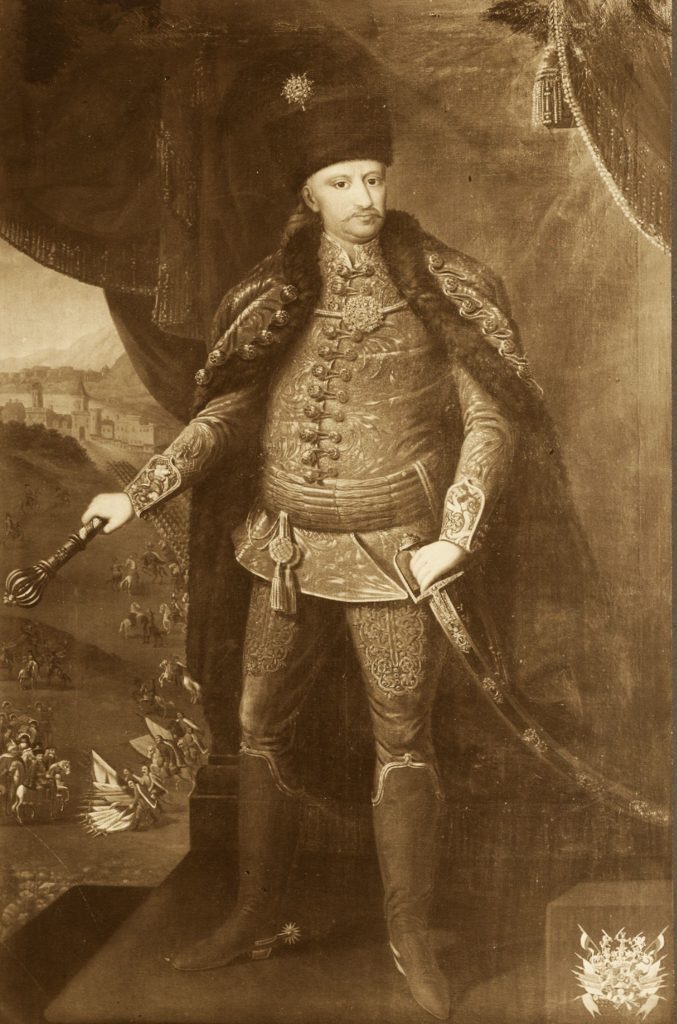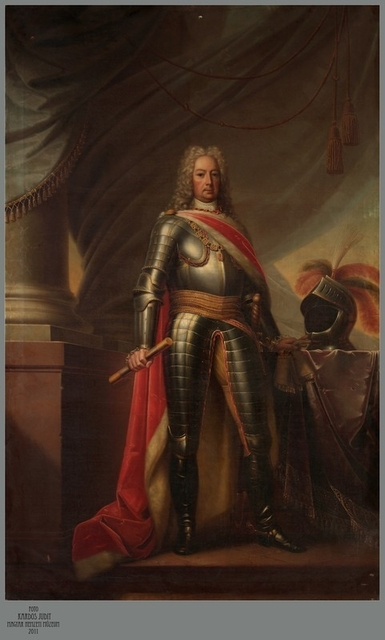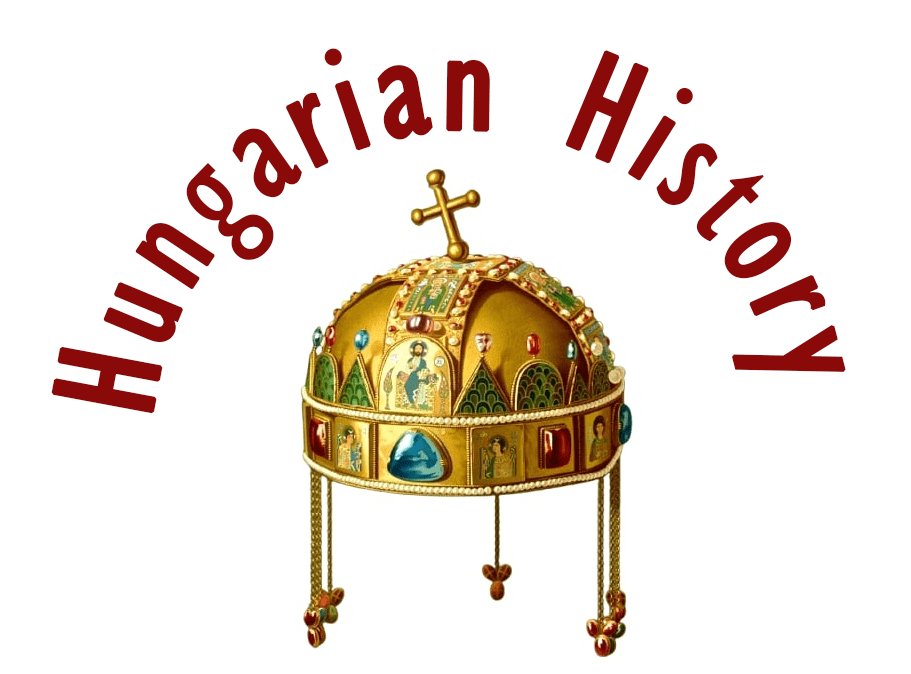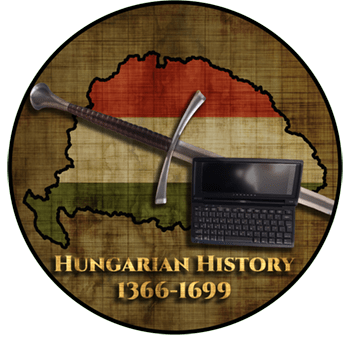In the autumn of 1705, General Louis Herbeville, the commander-in-chief of the Imperial armies, went to Transylvania to help Rabutin de Bussy, who was in a desperate situation, the western part of the country, including the Danube region, remained unprotected. The Imperial command underestimated the Kuruc tactics of raiding, which failed in many battles, but the Kuruc army, consisting mainly of irregular cavalry, could easily move even behind the enemy.

Rákóczi and his circle took advantage of the latter when he instructed Bottyán János to liberate the Transdanubian region, which he called the “fateful land”. Previously, Károlyi Sándor and Forgách Simon had attempted to conquer this part of the country three times, but to no avail. The population quickly turned away from the unpaid and therefore plundering and looting Kuruc troops. The nobility, which had strong links with the Imperial court, fled to Vienna rather than swear allegiance to Rákóczi. Károlyi was derisively referred to as Kártevő Sándor (“Wrecker” Sándor) by the Transdanubians.

And when it became certain that Herbeville had crossed the Tisza River, Bottyán did not follow his army any further but stopped near Kecskemét. Here he gathered his army of about 5,000 troops to conquer the Transdanubian region. The Imperial forces against him were of similar numbers, but they could not receive any further help from Vienna, while Bottyán could hope to find support from the population and the Kuruc irregulars hiding in the Bakony. The castles were also in Imperial hands, and around Sopron Pálffy János and in Styria Hannibal Heister was rallying their armies.

Bottyán set off from Kecskemét on 2 November, crossing the Danube at Solt two days later. The same morning he attacked Dunaföldvár. By 11 November he had already captured Simontornya, an important stronghold for holding the Transdanubian region, transporting supplies, and maintaining communications with the East.

Here, Bottyán divided his army into three parts (other researchers say not), with Béri Balogh Ádám and Kisfaludy György sending their captains of thousands southwards to liberate Baranya, Tolna, and Somogy counties, and another unit against Sümeg castle. He turned northwards. On 20 November, bypassing Veszprém and Palota, he captured the castle of Tata, whose Hungarian soldiers had opened the gate to him. He could not think of besieging Esztergom for lack of adequate artillery, but at the end of the month, he held a council of war with Bercsényi Miklós at the mouth of the Zsitva River.

By then Béri Balogh had already reached Kőszeg, where they captured Colonel Andrássy Pál. They were probably responsible for the capture of Kapuvár, Kőszeg and Borostyánkő. The cavalrymen of Bezerédj Imre and Csáky Mihály, sent from the Felvidék (Northern Hungary), prevented Pálffy and Heister from joining forces.

Bottyán invaded Pápa on 8 December, then drove Pálffy back towards Szombathely at Sárvár. After bypassing Vas County, he marched towards Szentgotthárd, where on 13 December, with the help of Bezerédj, he defeated Heister’s army of Serbian and Croatian soldiers. While Heister retreated to Szalónak, his armies scattered.

Bottyán then rushed to Sopron, and although he could not take the city, he cut it off from the outside world with a tight siege until March 1706. His artillery and infantry assaults failed repeatedly, as his soldiers panicked in the face of strong resistance.

At the call of his military patens, his army grew by the day, soon numbering over 30,000. The general, who was increasingly known as János the Beneficent, maintained strict discipline among his soldiers, forbidding plundering and pillaging, but at the same time doing everything to ensure that his soldiers received their supplies. His successes were due not only to the support of the people but also to the fact that the Imperials were tied down in the east and to his rapid, raiding tactics.

Within two months Bottyán János managed to conquer almost the whole part of the country, Kőszeg, Kapuvár, Tata, Sümeg, Simontornya, and Pécs were also in his hands. Győr, Esztergom, Székesfehérvár, Magyaróvár, Sárvár, and a few border fortresses remained in the hands of the Imperials, but the Kuruc were also constantly watching them.

While on 11 November 1705 Rákóczi’s army was defeated by Herbeville and lost Transylvania, the Kuruc had finally conquered the Danube region and now held it firmly in their hands.
Source: Szibler Gábor
Dear Readers, I can only make this content available through small donations or by selling my books or T-shirts:
Please, support me with a coffee here: https://www.buymeacoffee.com/duhoxoxa
You can check out my books on Amazon or Draft2Digital, they are available in hardcover, paperback, or ebook:
https://www.amazon.com/dp/198020490X or at https://books2read.com/b/boYd81

My work can also be followed and supported on Patreon: Become a Patron!http://Become a Patron!
Become a Patron! and donations can be sent by PayPal, too: https://tinyurl.com/yknsvbk7


https://hungarianottomanwars.myspreadshop.com/all
Subscribe to my newsletter here: https://tinyurl.com/4jdjbfkn

